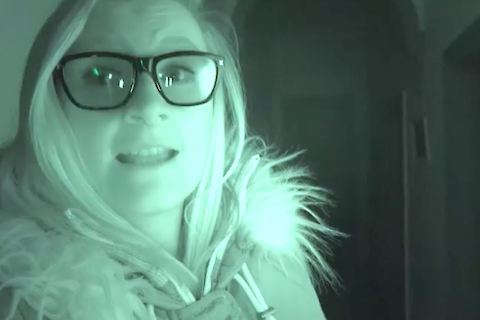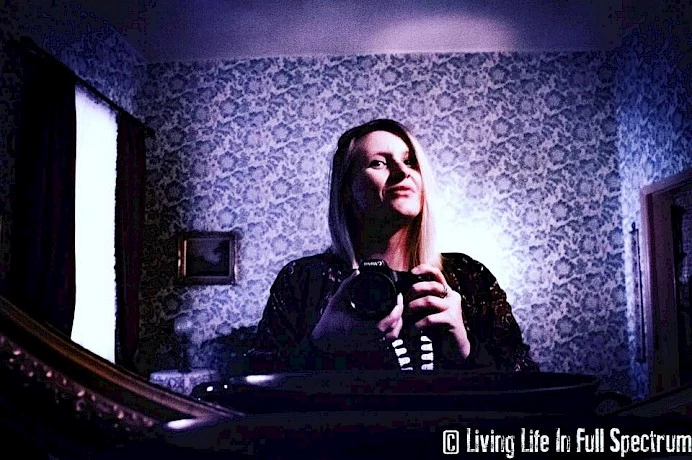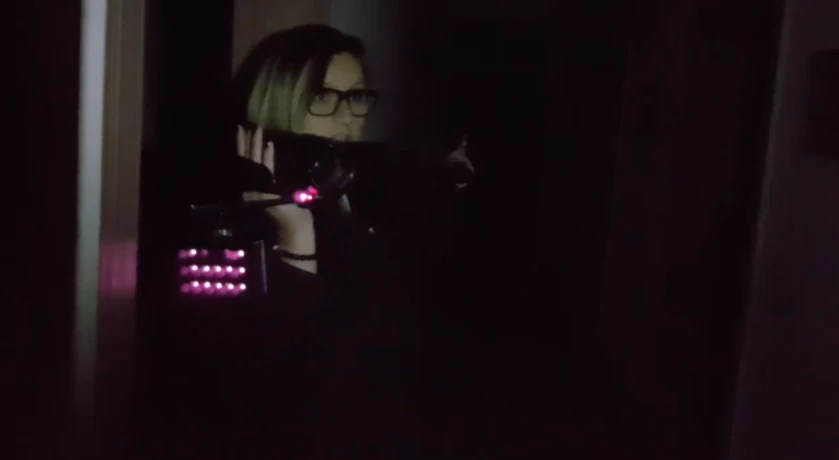

Video VS Still Photography
When I first started investigating the paranormal, everywhere I went I had my trusty digital camera with me. It was a cheap $60 digital camera that had the filters removed so it was 'converted' to see IR light and I took photos that had a nice little pink tone to them. It allowed me to see in complete darkness without using a flash. I incorrectly was under the impression that because it was a specially converted camera that the orbs I was picking up were not bugs or dust and had to be the real thing (a claim which is often used with converted and night shot cameras). I caught many photos which I thought were amazing captures of the paranormal. Again due to my lack of education at the time, I thought that because I was using a converted camera, that it was immune to some of the normal problems a camera can cause. It is something that I soon learnt with experience. I have done a lot of silly things and made a lot of questionable claims in my early days with my little camera (haven't we all? It is how we learn). I own up to them and I admit them because while I had enthusiasm, I lacked education. What I did do however was start to educate myself and also spoke to fellow investigators and I would show them my photos. They would explain to me why what I captured was likely not to be paranormal and explained the things like lens flare etc. It was also very obvious from early on that my cheap little camera always took very blurry photos because it thought it was seeing in the dark and the shutter would be open for seconds. Blurry figures weren't apparitions, they were a result of slow shutter speed. I took this wealth of information on board and decided to start learning as much as I possibly could. I also questioned some of the information that people gave me because again a lot of it was their opinion and not necessarily correct. This is why I think peer review is important, but you also need to fact check too. Some people are very good at making you think they know what they are talking about. Once I found reputable sources who knew how cameras worked and what was really happening, the advice proved to be priceless. I was then able to adjust how I did things during an investigation to avoid it happening again.
What I soon learnt was that a converted still camera still had all the same flaws as a regular camera. It simply had a filter in front of the lens removed. It means light can still bounce off the lens and create lens flare. Even though I wasn't using a flash, I was using an IR light and this was still able to bounce off moisture and dust and cause an orb effect. Even though I was using an IR light, the shutter would take too long to open and close and cause motion blur. I actually went on to study an accredited photography course. It is not something that makes me a professional photographer and I will never claim to be one, but what the course does teach you is essentially how not to use a camera. It teaches you about things like lens flare, how to avoid it and most importantly how it happens. It teaches you what happens to light when it travels through the lens and bounces off the mirror. It proved to be such an invaluable tool when it came to using a camera during a paranormal investigation. So much so that 5 years later, I went from the person who was taking over a 1000 photos per investigation, to someone that very rarely now uses a still camera. When I do use a still camera, it is only to take a picture of the setup of the room. From a paranormal perspective, I am not even sure if I personally would ever believe a photo I saw displayed something paranormal. There are too many questions. You see it turns out that a photo is so much more unreliable than video. You are seeing only a snapshot in time with no context. It can be interpreted in several ways. Usually, if you had video of the exact same shot at the exact time it was taken, you would see things completely differently, because now you have that context. While yes most investigators aim to take 3 shots in a row, it is still not a real time playback of what was really happening. So my visual focus during an investigation now lies with video.

It is not because I think a video camera is more likely to pick up something paranormal. Again a video camera is also not immune to error and can pick up natural phenomena. It is more that a video gives you a real time playback of everything that was happening and what everyone was doing at the time. It becomes quite a powerful tool. If you are filming an EVP session for example, while we do our best to tag noises we hear, there are some we might miss. When we hear these on playback we may think them to be paranormal. The video may actually show someone moving or coughing and shows us what was really happening at the time. When you are maneuvering around in the dark, it is easy to knock things over without realizing it. A video playback of this kind of incident will reveal if someone did knock an object or if it fell by itself. How often are you on an investigation when you don't remember seeing something on the floor and suddenly there it is? Was something thrown at me do you ask? If you have filmed a video walkthrough prior to the investigation, you will be able to spot if this was on the floor before the investigation and you simply failed to notice it. It gives you context.
Another benefit is that in theory, a video camera would also be capable of catching an EVP. In fact I have seen many recordings of video footage that have what are considered to be potential EVPS on them. Not to mention the fact that you have a real time play back of what is happening. You know how we tell people that something has happened but they won't believe it because they weren't actually there to see it? What if you had the whole incident on video? Would you view the incident in the same way seeing how it really played out? If it is something you end up standing by, here you now have a real time perspective of what you have experienced that you can show people for review. Again here is the importance of peer review. If you do catch something you think could be paranormal, show it to your peers and get their opinion. They may have experience and advice to offer. If they manage to explain it, you have learnt something new. If no one can explain it, it becomes all the more interesting.

Another perspective I will add as well, is that if you are behind a video camera during an investigation, you are automatically assuming the observer role. I have mentioned so many times about the importance of observing during an investigation. You are seeing things as they are really happening and you aren't usually getting caught up in the hype of a moment as you are seeing things as they happen. When you take an observational role, it really is quite eye opening. You learn a lot about human behaviour and how people react to different situations.
A video camera should be used with the intent of what it actually is designed to do. A real time recording of what took place. Don't expect to go in using a video camera to catch shadow people or orbs. When you are filming an investigation, use it to actually document your investigation. Get shots of the whole room so you can see where everything is and where everyone is standing or sitting. You don't have to walk around doing a first person ghost adventures style video. They are fun and hey I have done them too but if you can, have the camera set up on a tripod where it can fit everyone in the shot and the room as well. You won't get a sore arm from holding it all the time and now you are recording a proper account of what is happening in the room. If you are lucky to have more than one camera, maybe lock down a room with a static camera to see if you capture anything. Film a walk around prior to the investigation so you have a proper account of each room before the investigation. Get every single corner. You never know when you will need to refer back to the footage to see if there was a mark on the wall for example. If you have an experience during your investigation, talk about it then and there to the video camera and record your thoughts on the spot almost like a vlog. When you talk about an event days after it happens, you tend to either leave information out or you unknowingly embellish and make it sound bigger and better than it really was. Your account directly after the event is likely to more accurate. You may even remember the events differently than how they actually happened in the days later.
These are just some of the ways a video will aid you in so many more ways that just potentially capturing something paranormal.
So the next time you go on an investigation, think of ditching some of the other equipment and stick with your video camera. It really is one of the only things you need.
If you enjoy LLIFS, consider buying me a book (otherwise known as buy me a coffee but I don't drink coffee and I LOVE books). Your donation helps to fund the LLIFS website so everyone can continue to access great paranormal content and resources for FREE!

Top pages with similar subjects
Pepper’s Ghost 4206
Don't forget to follow the Facebook page for regular updates
Join the mailing list to receive weekly updates of NEW articles. Never miss an article again!
Buy the latest and past issues Haunted Magazine
Check out the books written by LLIFS